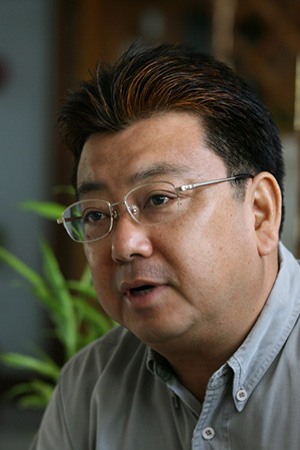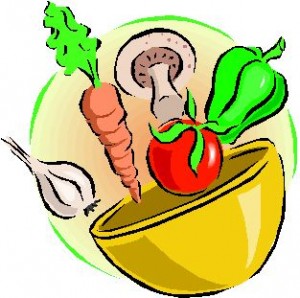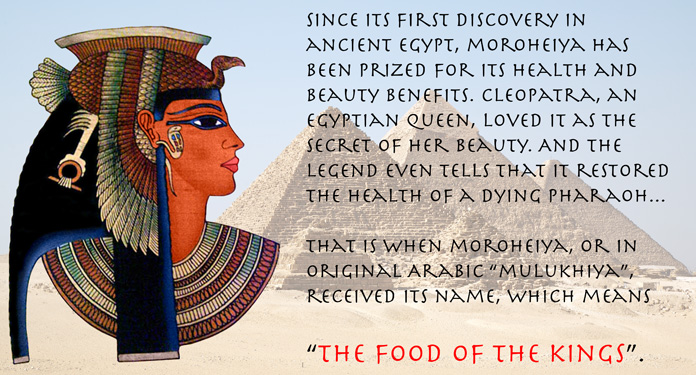By greenoo1

Since 1999 Mr. Sho Oga, a former executive of a Japanese health product manufacturer, pioneered organic agriculture in Thailand.

For the farm in Thailand, he picked the foothill of Dong Phayayen mountain under a giant white Buddha – the remote place in Klang Dong sub-district of Nakhon Ratchasima, as the perfect location to make healthy, organic products.
Organic agriculture requires two things: land unaffected by pesticides, and water that was not contaminated by chemical waste from other farms. He had drilled 150 meters deep well to finaly find clean, exclusive, water source for irrigation.
“Why organic? Because I just don’t want to do business and simply earn money ignoring nature, by discharging into rivers chemical-tainted water that could severely hurt fish and people and ruin the harmony of nature,” said Mr Oga.
His farm is certified as an organic farm by the Agriculture Department, of Thailand. Now it produces about 150 tons of more than 60 different types of vegetables a year, including Japanese cucumber, cherry tomatoes and moroheiya, which yields some 50 tons a year.
The produce is supplied to leading supermarkets, restaurants and health shops. The factory also produces some natural products – such as massage oil, soap, shampoo, organic teas and noodles – to supply domestic markets and to export to other countries.
Like many organic producers in every country, Mr. Oga had difficulty accessing the market, especially during the very first years of operation. However, he said that consumers want healthier lives and a better environment – and this is strongly driving the growth of organic produce.



By greenoo1
The Creator of GreeNoodle
Mr. Sho Oga
Before I began working with agriculture, I was working for a company in Japan that produced health supplements. During that time I encountered moroheiya – an unusually nutritious vegetable, that attracted a great deal of my attention.
Moroheiya, also known as the “King’s vegetable”, is rich in vitamins, minerals, and fiber. However, it had been rarely eaten in Japan or throughout the world. Although I hear some supermarkets carry it now, it is usually limited to the summer months, and generally people are still unaware of the existence of moroheiya.
The company manufactured and sold heath supplements; some including nutrients derived from moroheiya, but wasn’t interested in selling moroheiya itself as a vegetable. However the market for supplements is limited – it’s not for the youth, children, or healthy people…
I racked my brain to think of a product that would appeal to any age group. Something both children and adults could enjoy. My conclusion was noodles. People of all ages love noodles. Also, noodles are not just for Japanese style or Thai style cooking. There are many ways of cooking noodles: noodles with soup, ramen noodles, cold noodles, chow mein noodles, spaghetti noodles, noodles for salads, etc. Noodles are wonderful foods with universal appeal.
That is why I made up my mind to develop moroheiya noodles. So I quit my job to start an organic agriculture business that would offer safe foods to people while protecting and taking care of the environment.
Today I am proud to present to you the fruits of my hard labor. I put my heart and soul into perfecting this delicious health food. I wanted to make sure my noodles had the best combination of chewiness and smoothness. After years of frustrating trials and errors, I am finally rewarded with the invention of my dreams.
By greenoo1
Moroheiya Nutrition Comparison Chart
PER 100 GRAM EDIBLE PORTION
(Source: Ministry of Education, Culture, Sports and Scientic Technology of Japan, 2005) |
|
Moroheiya
|
Spinach
|
Carrot
|
Broccoli
|
|
Potassium (mg) |
530 |
690 |
280 |
360 |
| Calcium (mg) |
260 |
49 |
28 |
38 |
| Copper (mg) |
0.33 |
0.11 |
0.04 |
0.08 |
| Manganese (mg) |
1.32 |
0.32 |
0.1 |
0.22 |
| Vitamin A |
Alpha Caroten (µg) |
0 |
0 |
2800 |
4 |
| Beta Carotene (µg) |
10000 |
4200 |
7700 |
800 |
| Cryptoxanthin (µg) |
76 |
34 |
0 |
7 |
| Beta Carotene Equivalents (µg) |
10000 |
4200 |
9100 |
810 |
| Retinol Activity Equivalents (µg) |
840 |
350 |
760 |
67 |
|
Vitamin B (Thiamin) (mg) |
0.18 |
0 |
0.05 |
0.14 |
| Vitamin B2 (Riboflavin) (mg) |
0.42 |
0.2 |
0.04 |
0.2 |
| Vitamin B6 (Pyridoxin) (mg) |
0.35 |
0 |
0.11 |
0.27 |
| Vitamin B9 (Folate) (µg) |
250 |
210 |
28 |
210 |
| Vitamin C (Ascorbic acid) (mg) |
65 |
35 |
4 |
120 |
| Dietary |
Soluable (g) |
1.3 |
0.7 |
0.7 |
0.7 |
| Insoluable (g) |
4.6 |
2.1 |
2 |
3.7 |
| Total (g) |
5.9 |
2.8 |
2.7 |
4.4 |

















